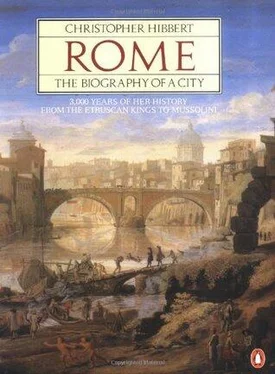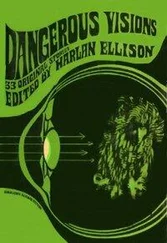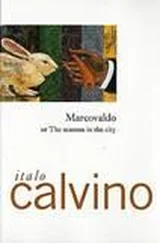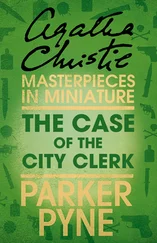Christopher Hibbert - Rome. The Biography of the City
Здесь есть возможность читать онлайн «Christopher Hibbert - Rome. The Biography of the City» весь текст электронной книги совершенно бесплатно (целиком полную версию без сокращений). В некоторых случаях можно слушать аудио, скачать через торрент в формате fb2 и присутствует краткое содержание. Жанр: Культурология, Искусство и Дизайн, на английском языке. Описание произведения, (предисловие) а так же отзывы посетителей доступны на портале библиотеки ЛибКат.
- Название:Rome. The Biography of the City
- Автор:
- Жанр:
- Год:неизвестен
- ISBN:нет данных
- Рейтинг книги:3 / 5. Голосов: 1
-
Избранное:Добавить в избранное
- Отзывы:
-
Ваша оценка:
- 60
- 1
- 2
- 3
- 4
- 5
Rome. The Biography of the City: краткое содержание, описание и аннотация
Предлагаем к чтению аннотацию, описание, краткое содержание или предисловие (зависит от того, что написал сам автор книги «Rome. The Biography of the City»). Если вы не нашли необходимую информацию о книге — напишите в комментариях, мы постараемся отыскать её.
Rome. The Biography of the City — читать онлайн бесплатно полную книгу (весь текст) целиком
Ниже представлен текст книги, разбитый по страницам. Система сохранения места последней прочитанной страницы, позволяет с удобством читать онлайн бесплатно книгу «Rome. The Biography of the City», без необходимости каждый раз заново искать на чём Вы остановились. Поставьте закладку, и сможете в любой момент перейти на страницу, на которой закончили чтение.
Интервал:
Закладка:
Many are the opportunities that await you in the circus [Ovid advised in his Art of Love ]. No one will prevent you sitting next to a girl. Get as close to her as you can. That's easy enough, for the seating is cramped anyway. Find an excuse to talk to her… Ask her what horses are entering the ring and which ones she fancies. Approve her choices… If, as is likely, a speck of dust falls into her lap, brush it gently away; and, even if no dust falls, pretend it has done and brush her lap just the same. If her cloak trails on the ground gather up the hem and lift it from the dirt. She will certainly let you have a glimpse of her legs… The deft arrangement of a cushion has often helped a lover… Such are the advantages which a circus offers to a man looking for an affair.
The sport was opened by a purple-robed state official wearing a heavy wreath of gilded laurels and holding an ivory baton surmounted by an eagle. He raised up a white napkin to the crowd and dropped it on to the freshly raked yellow sand that covered the arena. At first there might be displays of equestrian skill, the performers always riding without stirrups or standing on their heads or lying upon the horses, jumping from one mount to the next, engaging in mock sword fights with each other, or leaning down to snatch a trophy from the sand. Next came the horse races; then the chariots thundered round the track, as many as twelve emerging at once from the stables as soon as the rope, which was extended between the twin statues of Mercury, was pulled away. Sometimes the chariots were drawn by two horses, more often by four ( quadrigae ), occasionally by as many as ten. They raced round the circuit for seven laps, enveloped in clouds of sand thrown up by the wheels and the horses' hooves, the completion of each lap being signalled to the crowd by the movement of large wooden eggs and later of dolphins on the high embankment in the centre of the course. The chariots bore the colours – red, white, blue and green – of the factiones or stables from which they came; the horses were bedecked with pearls in their manes; their breastplates were studded with charms and medallions; the coloured ribbons of their factio were tied round their necks and in their knotted tails. The charioteers, leaning back against the reins, whips in their hands, helmets on their heads, their legs bound with leather straps, daggers sheathed by their thighs in case they had to cut themselves loose, also proclaimed the identity of their factio by the colour of their tunics. As the chariots hurtled towards the posts where they had to turn, consummate skill was needed to guide the horses into just the right position, for horses that turned too close to the post might swing the chariot crashing into it, while those that gave it too wide a berth lost positions that might never be regained.
The excitement of the displays in the Circus Maximus and the Colosseum attracted far larger audiences than did the theatres of Rome, even though the plays which were presented frequently offered scenes as violent and far more lubricious than those to be seen in the more popular places of entertainment. There were three principal theatres in Rome at this time, none of them offering anything like the accommodation afforded by either the Colosseum or the Circus Maximus, yet all of them enormous when compared with the largest theatres which have succeeded them. The Theatre of Pompey had about 27,000 seats, the Theatre of Marcellus some 10,000 and the smaller Theatre of Balbus which had been built in 13 B.C. had 8,000. 5But long gone were the days when such theatres could be filled by dramatists like Livius Andronicus, one of the founders of Roman drama, or Plautus and Terence who had adapted the content and style of the Greek masters for the stages of Rome. Plays were now written not so much for public performance as for private declamation; and the theatres presented productions more notable for the impressiveness of their effects than for the beauty of their language, the interest of their plots or the delineation of character. Playing to huge auditoria, actors wore easily identifiable masks and brightly coloured costumes, often merely making stylized gestures or dancing while a chorus spoke or loudly sang the accompanying words. Audiences, coarsened and degraded by the spectacles in the amphitheatre, demanded as much violence and sensationalism, rape, incest, pillage and cannibalism as the plot could be made to support. Women appeared naked on the stage, Leda making love to the swan, Pasiphae with the white bull of Minos; and when blows were exchanged real blood was shed and wounds inflicted. Before the end of the first century, convicted criminals were substituted for actors in the final scene and actually executed; bandits died on crosses; and a convict forced to take over the part of Hercules was wrapped in a poisoned cloak and burned on a funeral pyre.
Although the worst excesses were enacted in the times of the less humane emperors, even in those of the more kind-hearted the savageries continued apace. In the reign of Titus, when the Colosseum was inaugurated, no less than 5,000 animals, so it was calculated by Suetonius, were slaughtered there in a single day.
Titus had become Emperor in 79 when his father Vespasian, before suffering a fatal stroke, alluded to the customary apotheosis of an emperor in the last of his famous jokes: ‘Goodness me! I think I am about to become a god.’
Titus had proved a vengeful conqueror of the Jews whose rebellion he had suppressed, slaughtering prisoners wholesale after the sack of Jerusalem, throwing them to wild animals, setting up the Roman eagle in the Holy of Holies and carrying off to Rome the sacred treasures of Herod's temple. These included the silver trumpets and the seven-branched candelabrum, the menorah, which are shown being carried through Rome in a relief on the Arch of Titus erected across the end of the Via Sacra in 81. 6Titus had also been renowned for his profligate ways, his riotous parties, his fondness for young homosexuals and his lust for the Jewish princess, Berenice. Once established in power in Rome, however, he sent Berenice back to her people; he saw no more of his pretty boys, and he proved himself a generous, affable and charming ruler who displayed a sincere concern for the welfare of the city when first it was attacked by plague and then by yet another fire. His reign, though, was short. He died in 81, to be succeeded by his brother, Domitian, a lonely, introverted man of twenty-nine who had always been jealous of Titus's success and who had affected to be more interested in poetry and music than in politics. According to Suetonius, Domitian spent much of his time at the beginning of his reign by himself, catching flies and impaling them with deadly accuracy on the point of his pen. When his wife fell in love with an actor and had to be dismissed from the imperial household, he was more lonely than ever and before long found an excuse to call her back to him. The older he grew the more isolated and suspicious he became. And, since he had deeply offended the Senate by appointing himself Censor for life so that he had permanent control over its membership, by adopting titles of unprecedented grandeur such as Dominus et Deus , and by seeming bent upon a course leading to complete absolutism, he had good cause to fear the dagger of an assassin. It was said that in his palace on the Palatine he paced up and down the principal courtyard glancing apprehensively at the images of the gardens reflected in the polished Cappadocian marble surfaces, in dread of catching sight of a lurking enemy.
This immense palace, largely financed by confiscations of property from Senators accused of treachery, rivalled in splendour Nero's Domus Aurea . Designed for Domitian by Caius Rabirius, it comprised his official residence the Domus Flavia , his private palace the Domus Augustana , and a vast stadium, surrounded by double porticoes, where horse races were probably held. To clear the site for this extensive development, rows of houses were demolished and tons of earth were carted away to level the ground. Fifteen years passed before the new complex of cloisters and peristyles, fountains and pools, sunken gardens and colonnades, temples and decorated apartments was completed. The remains of the dining-hall still bear witness to the place's vanished magnificence, to the pleasures enjoyed by the Emperor's guests who, reclining on cushioned couches beneath pink marble walls, could see through windows overlooking gardens in which brightly plumaged birds fluttered in cages beside sparkling fountains. 7But the obsessively paranoiac Domitian seems to have derived little pleasure himself from the luxury of his palace. And in 96, the year of its completion, the death he had long expected overtook him. He was stabbed to death by several assailants encouraged by his wife Domitia, various palace officials and the commanders of the Praetorian Guard.
Читать дальшеИнтервал:
Закладка:
Похожие книги на «Rome. The Biography of the City»
Представляем Вашему вниманию похожие книги на «Rome. The Biography of the City» списком для выбора. Мы отобрали схожую по названию и смыслу литературу в надежде предоставить читателям больше вариантов отыскать новые, интересные, ещё непрочитанные произведения.
Обсуждение, отзывы о книге «Rome. The Biography of the City» и просто собственные мнения читателей. Оставьте ваши комментарии, напишите, что Вы думаете о произведении, его смысле или главных героях. Укажите что конкретно понравилось, а что нет, и почему Вы так считаете.












